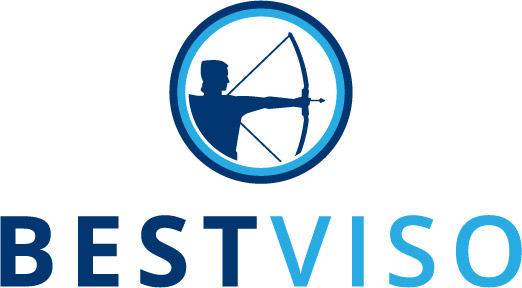Knowledge – as we all know – is power. Hence the reluctance, at times, of those responsible in the company to share knowledge; they want to render themselves indispensable. It is only with sound knowledge management that market research data can be converted into proverbial gold pieces filling the treasure chest for the development of a successful company strategy. Yet the reality often looks different.
Knowledge management often remains a vague notion
Often, different departments will commission market research studies. If there is a centralized corporate market research department, frequently it doesn’t suffice for internal clients to receive the results via e-mail: files may get lost in various drives and folders, generating unnecessary friction. After all, market researchers spend valuable time in onboardings, where they find themselves repeatedly passing along the identical information. In the event of any change in the market research department, the know-how is quickly lost, and new colleagues often have no idea where something is located – or they no longer enjoy access to the data at all. In the worst case, studies are redundantly conducted on the same topics, creating unnecessary budgetary burdens in terms of both money and time.
Using knowledge as a valuable resource
Knowledge – such as staff competencies or information about customers – is, fundamentally, a scarce resource. Consequently, it has a great market value – and for a company, it’s indispensable. Knowledge is a unique resource because through use and sharing with others, it does not diminish, but rather increases. For this reason, knowledge can and ought to be developed and used both competitively and within a company.
In their book The Knowledge Creating Company, Japanese authors Ikujirō Nonaka and Hirotaka Takeuchi define “knowledge management.” According to their concept, knowledge management consists of a process of continuous creation of knowledge, its broad organizational dissemination, and its rapid implementation in new products, services, and systems.
Dissemination takes place in very divergent systems. Corporate market research uses primarily content-oriented systems such as document management systems or web-based knowledge databases. These have the advantage of enabling all relevant stakeholders to gain access to the results so that it is also dubbed a “people-to-document strategy”.
Create a clear database structure for sustainable knowledge management
The database should evince a clear structure, based on business processes, for example. Subsequently comes the formation of knowledge categories, ranging from strategic market/consumer insights and trends to the product ideas and concept development, communication tests and touchpoint analyses, shopper insights, and finally market success validation and insights.
The content of an advanced knowledge management database extends beyond market research reports. Equally important is including the framework of the business background and objective, project objectives, as well as the activation/implementation (“Action to be taken with the results”). Another crucial task is to hold the stakeholders responsible for the implementation (mostly marketing) of a corresponding creation of an “Action taken with the results” and to feed it into the system.
Here is an example of possible content structuring:
- brand/ year/person(s) in charge (possibly)
- background
- business objective
- market research project objective
- method
- test material
- questionnaire
- institute report
- summary of the results
- derived activities
Comprehensive, complete content of this nature is a prerequisite for assessing why and what was tested as well as which activities were derived from it, even many years down the road.
Involve and engage stakeholders who are relevant to knowledge management
Making findings available to everyone enables an organization to become a “learning organization.” Despite this advantage, this subject often has a subordinate status, because frequently the marketing department lacks adequate time for planning these processes intensively. Meanwhile, corporate market researchers battle to ensure that knowledge is collected and made available in a structured way. To facilitate this process, here are four recommendations.
Engage stakeholders who are relevant to knowledge management
1. Ensure that those responsible for higher functions get on board
Present your ideas to your superiors – ideally, involving your company’s opinion leaders. By communicating the advantages, you will discover what everyone expects of this database, making it easier to convince everyone involved. Then you will be well-positioned to convey the acceptance and the advantages of a knowledge database.
2. Develop a targeted keyword and search system
It should be possible to locate the studies according to clear criteria. To accomplish this, you should try to see matters from the vantage point of the different user groups. Users with a marketing background are probably more likely to search for brands and buzzwords from the objective, whereas market researchers are more likely to search for methods and institutes.
The standard includes at least brand/product, year of implementation, objective of the study, method/institute, and main findings, as well as activation in buzzword form (e.g., launch recommendation for product x). The keywords must be assigned consistently over the long term. Therefore, you should allow sufficient time, incorporating suggestions from different sites.
3. Select the data sources to be integrated into the system.
Define precisely which data will strategically move your business forward, e.g., internal market and media data, consumer insights, and/or trend reports. Many digital platforms are capable of incorporating other digital sources, such as Google search results or trend wikis. Personalized key insights can be displayed as needed on the dashboard, sorted by timeliness. Fully digitized, you can even conduct your own short surveys from the system in your own digital systems such as homepage, newsletter, or shopping processes.
4. Furnishthe system with an attractive name and communicate its advantages
Attractive products require attractive packaging. So choose a system name that clearly telegraphs its benefits in a catchy way. Often, knowledge databases don’t occupy top of the mental priority list, but with a good name and benefit-oriented communication, you will generate the attention and interest that the valuable information truly merits.
Conclusion
Successfully working with a knowledge base means that you are using your resources both effectively and efficiently: 1) You are ensuring that all relevant stakeholders possess the same level of knowledge. 2) You’re able to derive strategic actions for your brands from the information more quickly. 3) You develop into a learning organization—set up in a qualitative and methodical way – thus creating a decisive competitive advantage for yourself.
Do you have further questions about knowledge management in market research? Feel free to contact us at info@bestviso.com.
If you are interested in further information on insights in the digital age, you can find additional information on this topic in our blog.
Already have various data sources from your market research? If you don’t have time to translate all the findings into strategic recommendations for action, we’ll be glad to support you. Read more about our internal knowledge management service here.

